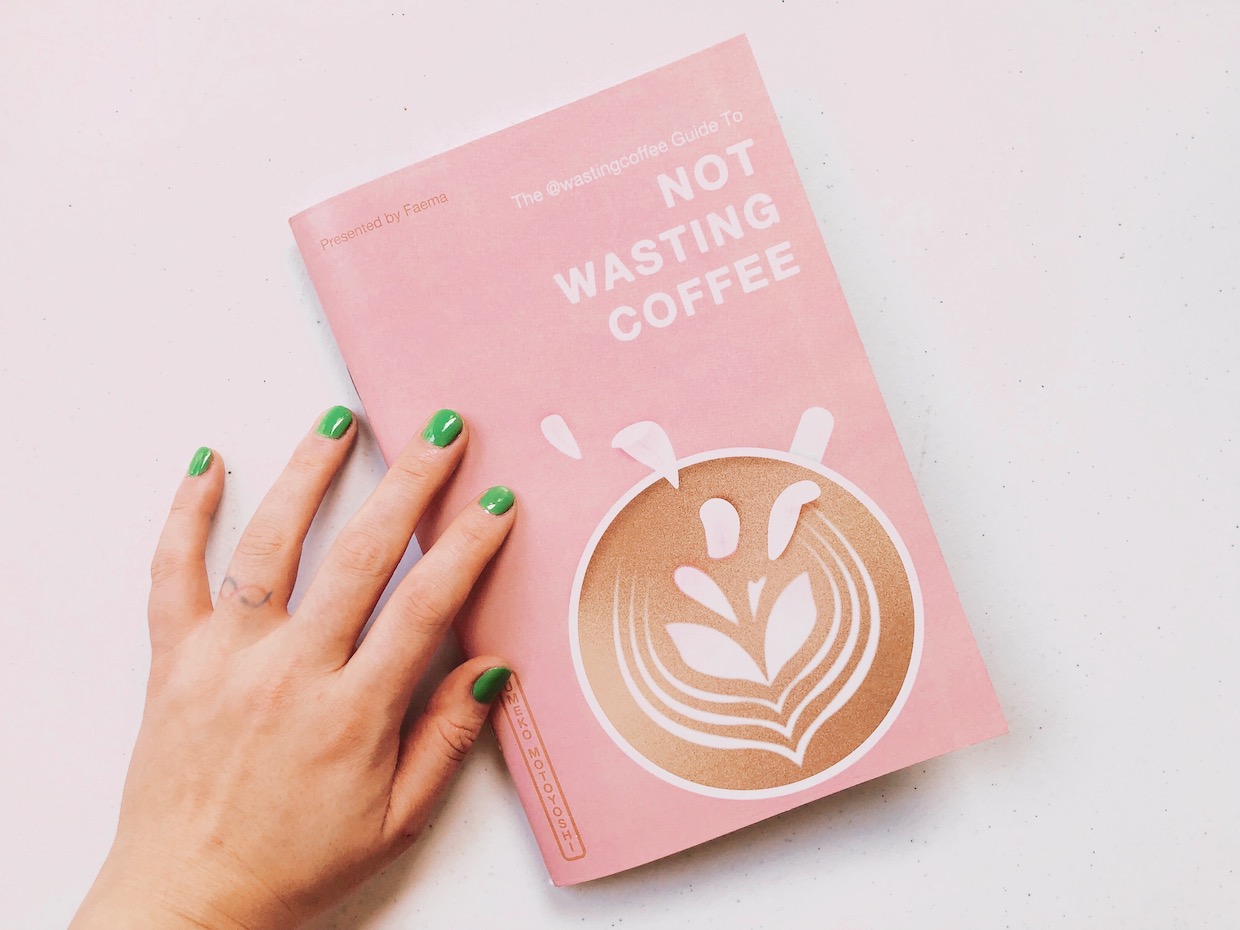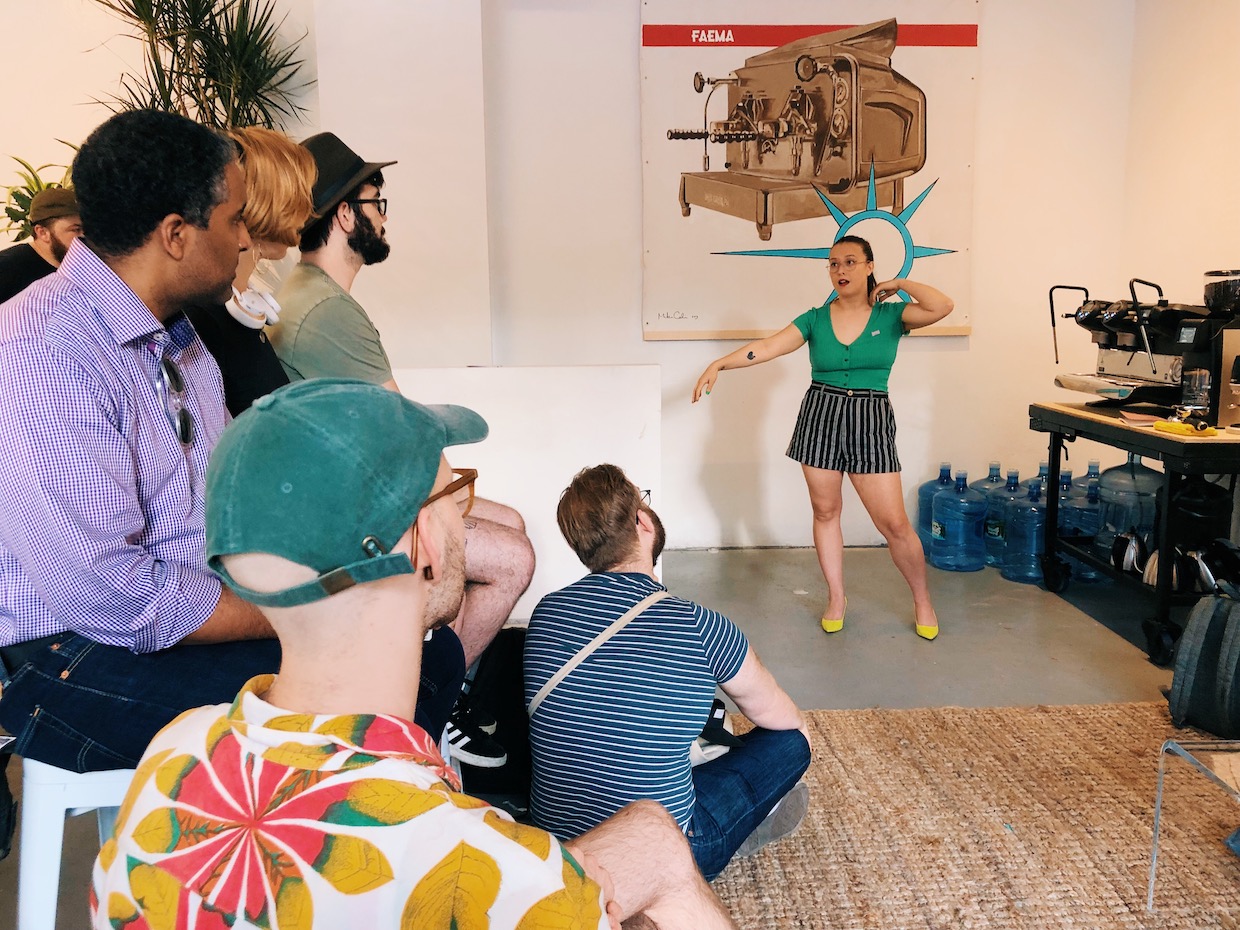As aesthetics and creativity are central to the culture of high-end coffee consumption, businesses and individuals in the coffee world have created a constant stream of images showcasing exquisitely crafted latte art, mugs of coffee placed artfully alongside plants or on woodgrain tabletops, beans flowing from a roasting machine in a cloud of smoke, ripe red coffee cherries, flowering trees, and stunning landscapes.
In recent years, coffee people may have also noticed images of coffee being tossed into the air, poured into overflowing cups or unconventional vessels, or simply dumped onto the ground — all for the sake of capturing a unique and interesting coffee-action photo.
While presenting these kinds of images, the satirical Instagram account @wastingcoffee, established this past March by Umeko Motoyoshi is providing a contrary message.
“The aestheticization of coffee waste had bummed me out for a long time — not just because of the waste required to create these images, but because of the message it sends to consumers,” Motoyoshi told Daily Coffee News. “The C-market price for coffee is hitting all-time lows right now, people are losing their coffee-growing businesses, it’s very serious and dire. We need to figure out how to pay more for coffee, but our consumers aren’t ready to pay more. And it doesn’t help when we charge $5 for a pourover and then post photos of us dumping a full Chemex onto the ground. And in this economic climate, it’s insensitive at best.”
Over the past several months of managing the account, Motoyoshi has also hosted regular community conversations about reducing waste. Most recently, Motoyoshi wrote “The @wastingcoffee Guide to Not Wasting Coffee.” Chris Hulsizer created the cover illustration and Kat Melheim of Coffee People Zine provided layout services. Espresso machine manufacturer Faema helped subsidize costs for printing and labor, though Motoyoshi retained full creative control.
The guide was officially released during an event in June, held at Faema’s pop-up cafe in New York City. A related workshop led by Motoyoshi explored each section of the book, looking at sustainable alternatives to industry standards at each step, from green buying to brewing to latte art throwdowns.
“Coffee professionals ask me for waste reduction tips fairly often, and I wanted to have something tangible, accessible, and thorough to give them,” Motoyoshi said. “The book covers everything from coffee solubility to the equations behind extraction yield to making ice cream with throwdown lattes. It’s designed to be a reference and also an enjoyable cover-to-cover read. I printed it zine-style to keep the price accessible for a wide range of coffee professionals.”
At the launch event, Motoyoshi focused on using clear and practical language designed to promote actionable steps. The goal was to remove as many barriers to waste reduction as possible.
“I’ve worked in specialty coffee for my entire adult life. I love coffee, and I want it to be around for a long time,” said Motoyoshi. “As an industry, we’re facing pretty big existential crises. Now, more than ever, I want us to act from a place of truly, earnestly valuing our product. It takes such an incredible amount of skill and labor to produce specialty coffee, and I really want us to keep that in mind in all of our decision making. Coffee is precious. We shouldn’t normalize wasting it. I hope that this book will help businesses improve their quality while reducing their costs. I hope it will encourage coffee professionals to continually question and pursue better answers. And I hope it will support better messaging to our customers, messaging that truly communicates the value and the preciousness of coffee.”
For a starting point, Motoyoshi shared these five tips for any coffee business owner seeking to reduce coffee waste:
Five Simple Steps to Reduce Your Coffee Waste
1. Delicious coffee solids that don’t get extracted are wasted. Waste means increased cost! I talk about what this means in detail in “Not Wasting Coffee.” By roasting and brewing for higher extraction yields, you can use less coffee beans to serve the same number of customers, with lower costs and higher quality.
2. Freeze coffee. Extend the shelf life of your green coffee by storing it in a freezer. This is practiced by roasteries like George Howell. You can also freeze roasted coffee. We’re always looking for ways to re-use stale coffee – but let’s start by reducing the amount of coffee that goes stale in the first place.
3. Reduce batch sizes. A lot of batch brew is thrown away after sitting for too long. The simplest way to reduce waste in this area is to brew smaller batches.
4. Connect with a group or business that will gather your coffee grounds for farming purposes. One cafe I spoke with in Canada donates their grounds to the YMCA each week. The YMCA uses the grounds as mushroom substrate in the city center.
5. By all means, keep having latte throwdowns! But make sure they’re zero-waste. Gather the lattes in a Cambro and turn them into ice cream, pudding, White Russians, whatever you want! There’s a whole chapter in “Not Wasting Coffee” with a ton of zero-waste throwdown ideas.
Lily Kubota
Lily Kubota is the managing editor and digital content manager for Roast Magazine. She is based in Southern California.
Comment
1 Comment
Comments are closed.









Roasting at source means up to 20% of coffee weight isn’t shipped around the worlds oceans. Means coffee communities aren’t left in abject poverty either.